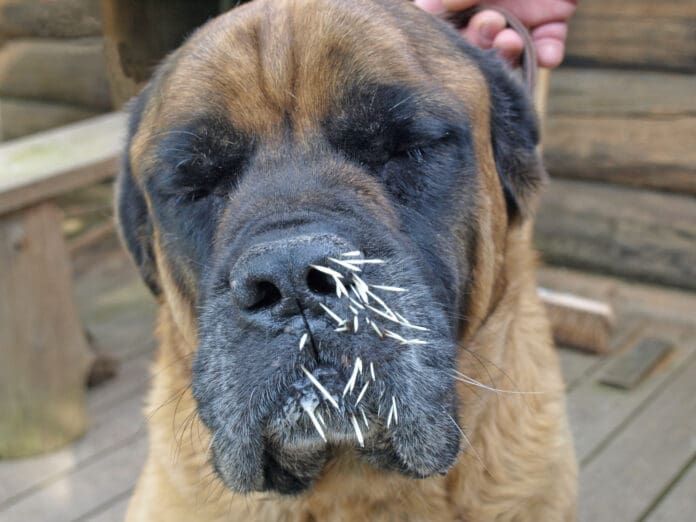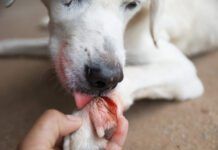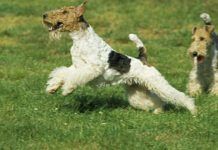The worst case I have had of porcupine quills in a dog was a nightmare—literally. At 2 a.m., my veterinary technician and I tallied up the last of the 252 quills we pulled out of a dog who engaged a porcupine. That dog attacked, killed, and then rolled on his porcupine opponent. There were a lot of quills.
Let’s hope your dog is more cautious than the dog in this case. Most dogs usually gently poke a porcupine with their nose or dab at it with a paw, walking away with a sore nose or foot and just a few quills to be pulled.
But some dogs do go all out, attacking and killing the porcupine, leaving the scene with a face full of quills.
What Are Porcupine Quills?
Porcupine quills are modified hairs. They have barb-like scales on the hairs that help them to attach, and then, if not quickly pulled out, can migrate farther into your dog’s skin and body.
Porcupines don’t fling quills at potential attackers. Your dog must come up and touch them to get quilled.
If your dog is one of few sensible canines who only has two or three quills in his nose or muzzle, you might be able to remove them at home using needle-nose pliers. Your dog will have to be restrained, however, because it will hurt. The big concern is that your dog may have rubbed or chewed off some quills, so there are more in his skin than you think.
Veterinary Visit to Remove Quills
Most dogs get a muzzle or paw full of quills and often have quills in their mouths. Removing the quills requires a veterinarian and sedation. It hurts.
With your dog sedated, your veterinarian will do a thorough, full-body check for quills. With hairy dogs, you must run your hands over each inch of the dog’s body, feeling for quills or quill stumps. Often missed sites include between toes or in the mouth under the tongue or along the gum line inside the lips.
The skin and underlying tissues will be inflamed where the barbed quills penetrated deeper. It must be assumed that the quills carry infection and introduce bacteria into your dog. Most clinics will dispense pain medications and antibiotics. You will also need to observe your dog carefully for any swollen areas or areas that remain painful after a day or so.
The quills can migrate through tissues in your dog’s body. On rare occasions, a dog will develop a granulomatous abscess from a migrating quill. This can occur weeks or months later. Dogs have had abscesses in their lungs, liver, muscles, and sadly, on rare occasions in the brain.
Obviously, it’s best to avoid letting your dog interact with a porcupine. If you know of a porcupine den in your area, avoid it, and keep your dog on a leash. A porcupine is not going to come looking for trouble and, if left alone, will simply waddle away. If your dog pesters one, it will fling its tail about but not charge your dog unless it is defending porcupettes (baby porcupines).






